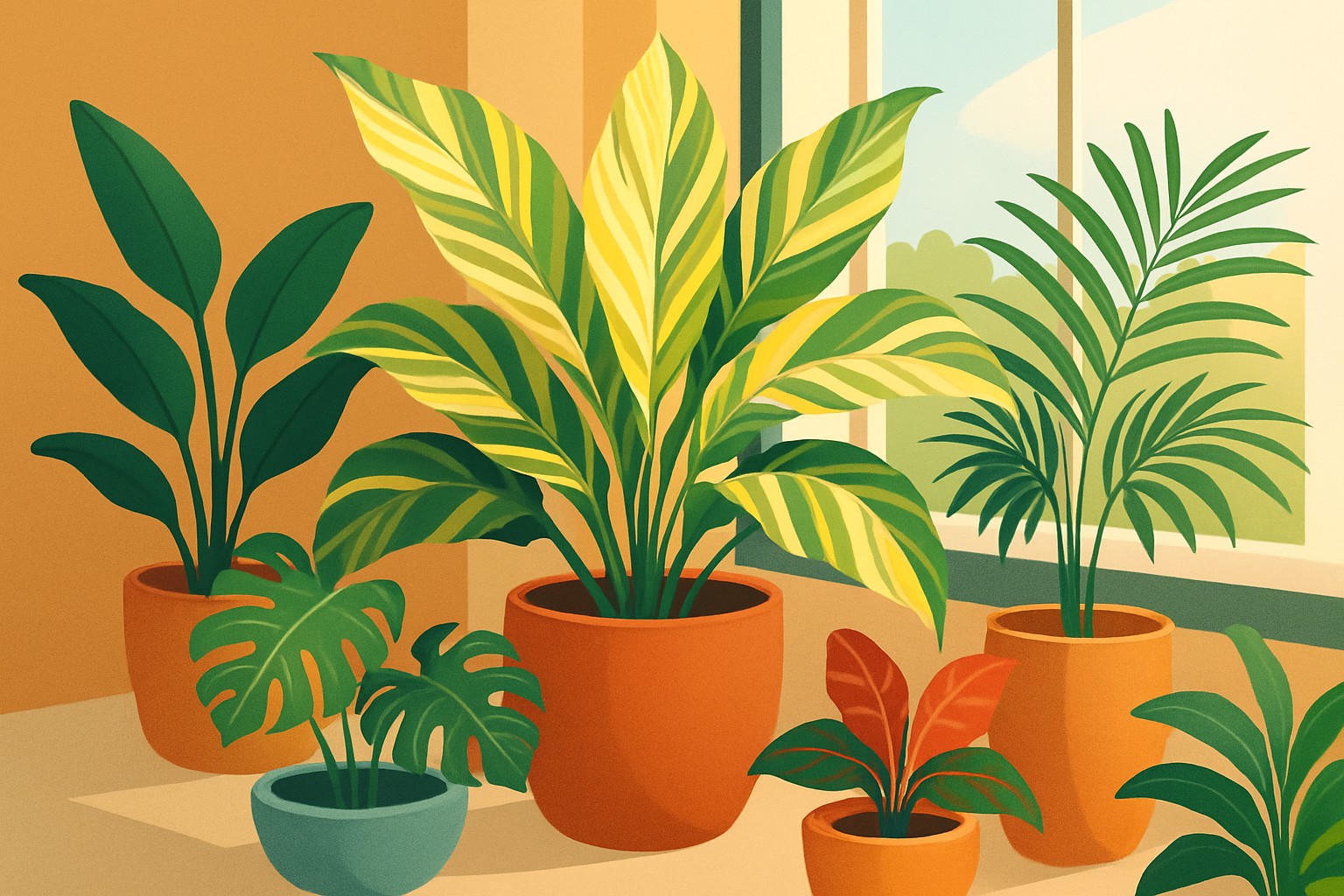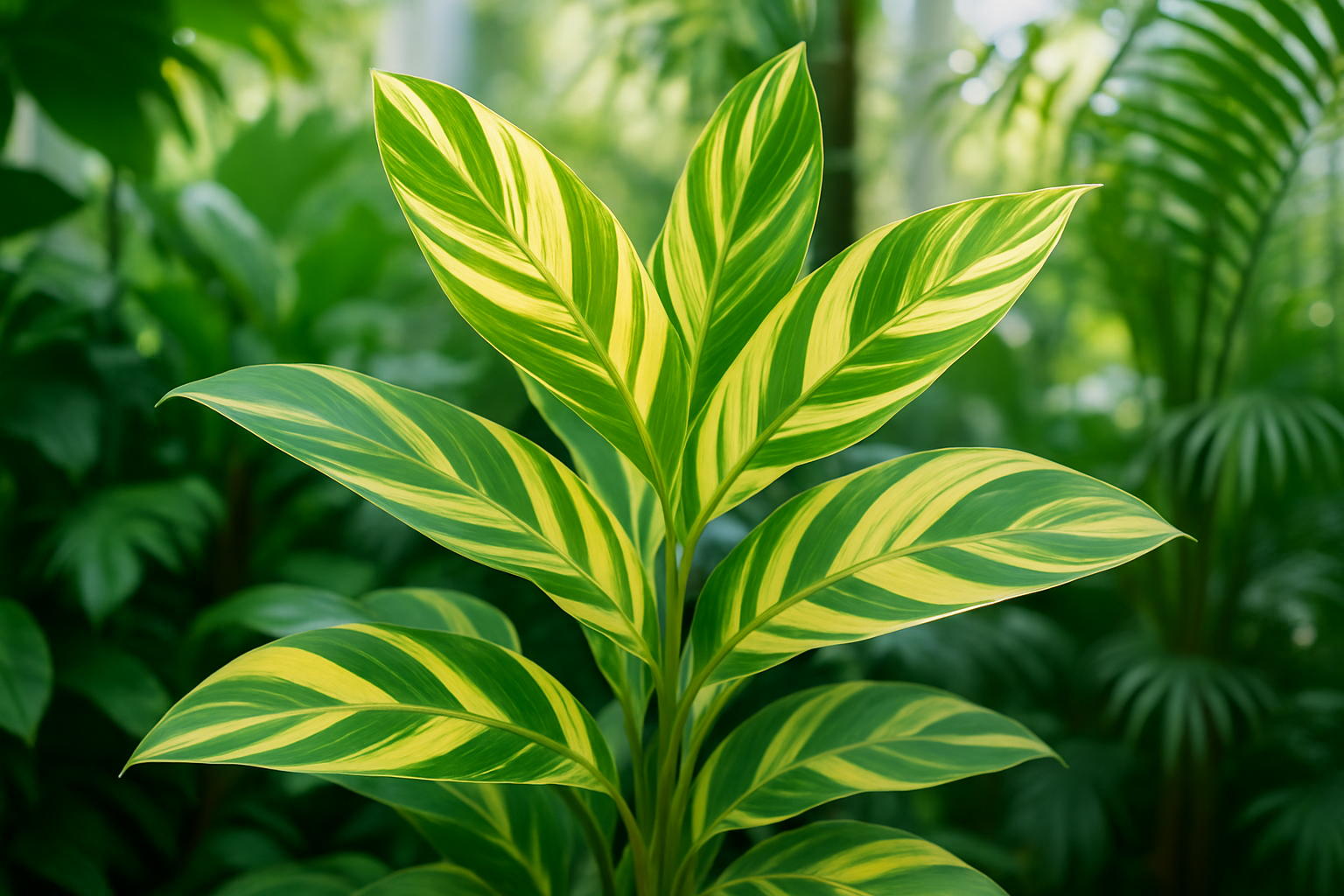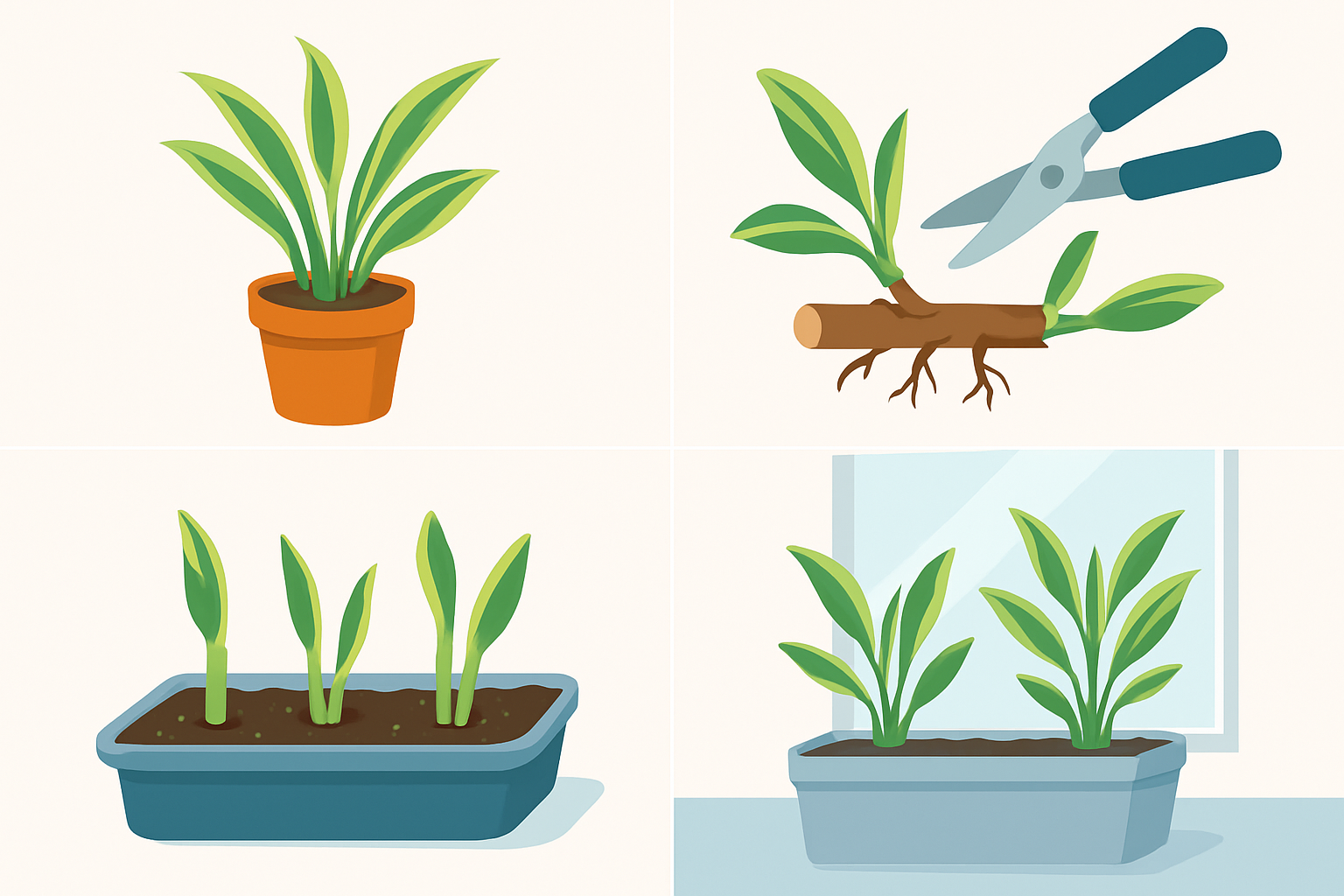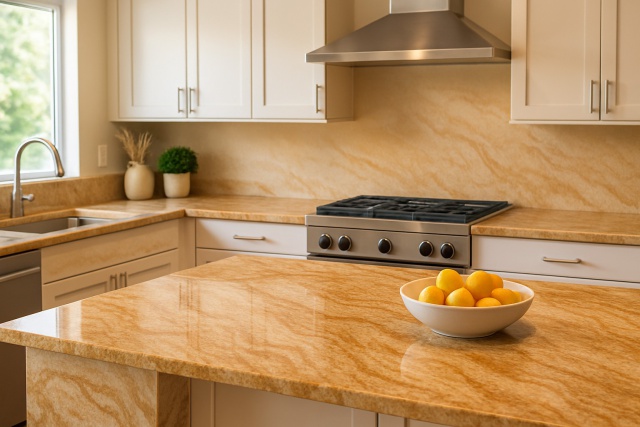Variegated Ginger Plant Care for Indoor Gardens

The variegated ginger plant really grabs the attention of indoor gardeners with its eye-catching, multicolored leaves that bring a bit of a tropical getaway right into your home.
What You Ought to Know About Variegated Ginger Plants
Variegated ginger is a proud member of the Zingiberaceae family and steals the show with leaves that flaunt cream, yellow or white streaks woven into deep green hues. This tropical charmer grows in hearty clumps with sturdy stalks and seems to thrive best when the air is warm and humid—almost like it’s soaking up a tropical vacation vibe.
- The botanical name is Alpinia zerumbet ‘Variegata’ but most people just call it Variegated Shell Ginger
- You’ll spot it easily by its broad lance-shaped leaves adorned with creamy-yellow or white stripes that run lengthwise—kind of like nature's own pinstripes
- This beauty hails from the tropical regions of Southeast Asia and the Pacific islands where it usually prefers the cozy shade of forest understories
- When you bring it indoors, expect it to grow between 3 to 6 feet tall. It forms a dense bushy clump supported by thick underground rhizomes—just don’t be surprised if it gets a little demanding about space
Best Conditions for Growing Indoors
Getting those indoor plants to thrive is half art, half science. You want to create a little haven where they can soak up just the right amount of light, soak their roots without drowning, and enjoy a comfy temperature that doesn’t make them sweat or shiver. It’s like giving your plants their own cozy apartment, minus the noisy neighbors. With a pinch of patience and a dollop of care, you’ll have your green friends flourishing in no time.
Variegated ginger plants usually thrive indoors when you can recreate a little slice of their tropical homeland. They absolutely love plenty of bright indirect light, steady warmth and a good dose of consistent humidity.
- Place the plant in bright indirect light to keep its variegation vibrant and avoid leaf burn
- Keep temperatures steady between 65°F and 85°F (18°C to 29°C) to create a warm tropical vibe your plant will thank you for
- Aim for high humidity around 60-80%. Using humidifiers or pebble trays stops leaves from getting crispy and sad
- Make sure there is good air circulation to prevent fungal problems but watch out for cold drafts that stress your leafy friend

A lush variegated ginger plant thriving indoors with vibrant multicolored foliage under optimal lighting conditions.
Soil and Potting Needs
When it comes to soil and potting, getting the mix just right can make all the difference. A good soil mix is like a spa day for your plants. Whether you are repotting a finicky fern or giving a new cactus a home, the right blend provides the perfect balance of drainage and nutrients. In my experience, a well-draining soil keeps roots happy and prevents that all-too-common soggy mess. So, roll up your sleeves and treat your plants to a comfy new setup they'll thrive in.
Picking the right soil mix is key if you want your variegated ginger to flourish indoors. It loves loose, well-draining potting soil that holds just enough moisture—think of it as a Goldilocks situation not too wet or bone dry. Adding organic goodies like peat moss or coconut coir helps keep moisture just right. A sprinkle of perlite or coarse sand increases airflow and drainage. Use a pot with drainage holes or root rot can sneak in when you least expect it.
| Soil Component | Suitable for Variegated Ginger? | Drainage Quality | Nutrient Holding Capacity |
|---|---|---|---|
| Peat Moss | Absolutely a great fit | Moderate | Impressively high |
| Coconut Coir | Also a top contender | Moderate | Decent |
| Perlite | A good choice | Excellent | On the low side |
| Coarse Sand | Works well | Excellent | Not much to hold on to |
| Standard Potting Mix | Fairly okay, gets the job done | Can fluctuate | Can fluctuate |
| Clay Soil | Best to avoid | Poor | Surprisingly high |
Tips for Watering Plants
Keeping your green friends happy can sometimes feel like a bit of an art—and a little bit of a guessing game. But don’t worry, with a few handy tips up your sleeve, you’ll be growing a thriving indoor jungle in no time.
Variegated ginger thrives when its soil stays consistently moist but never soggy—think Goldilocks, not swampy. Overwatering can lead to root rot, while underwatering tends to make those pretty leaf edges brown and curl up like a sunburned leaf. A handy rule of thumb I have found is to water deeply once the top inch of soil feels dry to the touch, making sure any extra water can happily drain away.
- Water your plant when the top inch of soil feels dry to the touch but be careful not to drown it by keeping the soil soggy
- Using a finger test or a moisture meter can give you a better idea of when your plant truly needs a drink
- Avoid sticking to a strict watering schedule without paying attention to what your plant is signaling
- Cut back on watering during the plant’s winter dormancy when it takes a growth nap
Managing Fertilization and Nutrients Practical Guide
Variegated ginger plants really thrive when you feed them regularly during their active growing phase. This helps keep those colorful leaves popping in all their glory. You’ve got options here—organic or synthetic fertilizers both do the trick. I’ve found that balanced slow-release formulas are the safest bet since they tend to avoid nutrient burn. Just watch for warning signs like yellowing leaves or a slowdown in growth and tweak your feeding routine accordingly.
Go for a balanced fertilizer with an NPK ratio around 10-10-10 or 14-14-14. This trio supports healthy leaves and strong root growth.
Feed your plants every 4 to 6 weeks during the lively spring and summer months. Reduce feeding during fall and winter when they prefer to slow down.
Follow the package instructions carefully and always water your plant after fertilizing to prevent salt buildup.
Watch for yellowing leaves as this usually indicates nitrogen deficiency. If you see leaf tip burn your plant is signaling that you may be overusing fertilizer, so adjust feeding to keep things healthy.
Pruning and Maintenance
Keeping your plants in tip-top shape means a bit of pruning and regular upkeep. Think of it as a little haircut and check-up rolled into one—both essential to fend off any unwanted pests or diseases sneaking in. While it might seem like a chore, there’s a quiet satisfaction in trimming away the old to make room for fresh growth. And honestly, those freshly pruned branches tend to bounce back with a vigor that’s truly rewarding. Just remember the key is consistency not perfection. With a steady hand and a keen eye, your plants will thank you in the long run.
Regular pruning is a simple trick to keep your variegated ginger plants looking neat and healthy. Snipping off yellow or damaged leaves doesn’t just tidy things up; it encourages fresh growth and keeps those beautiful variegated patterns crisp and eye-catching.
- Prune early in the growing season to shape your plant and remove dead foliage for a fresh start
- Always use clean and sharp pruning shears or scissors because dull tools can harm the plant and increase disease risk
- Take your time trimming carefully around variegated leaf edges to keep your plant's unique look
- For seasonal upkeep, cut back older stalks all the way to the base. This encourages fresh shoots to appear and keeps your plant lively
Managing Pests and Diseases to Keep Your Plants Happy and Healthy
Indoor variegated ginger plants can occasionally become a magnet for unwelcome visitors like spider mites and aphids. On top of that, they’re a bit prone to fungal infections when things get too damp or the air gets a little too still.
| Pest/Disease | Symptoms | Treatment Options | Prevention Tips |
|---|---|---|---|
| Spider Mites | You’ll notice fine webbing on the leaves along with tiny speckled spots that are hard to miss once you look closely | Give your plants a gentle bath with insecticidal soap or neem oil, and don’t be shy about raising the humidity a bit to make life tough for these little pests | Keep humidity levels up and make it a habit to wipe down those leaves regularly to keep spider mites at bay |
| Aphids | Leaves might curl or turn a bit yellow, often feeling sticky thanks to the residue these guys leave behind | A good rinse under water usually does the trick, followed by a careful application of insecticidal soap to send aphids packing | Try not to overdo the fertilizing and always inspect new plants closely before introducing them to your green family |
| Root Rot | Leaves wilt sadly and yellow, while the roots turn soft and mushy, almost giving up on you | Chop off the damaged roots, repot your plant in fresh soil, and be sure to cut back on watering—it's a classic case of too much love | Use soil that drains well and resist the urge to overwater, even if your plant looks thirsty |
| Leaf Spot Fungus | Brown or black spots start appearing on the leaves, which is never a good sign | Applying fungicides helps, plus boosting air flow around your plants can make a big difference | Avoid watering from above like the plague and prune out any infected leaves ASAP to keep this fungus from spreading |
Ways to Propagate Plants A Handy Guide to Growing Your Green Family
You can propagate variegated ginger indoors through division, stem cuttings or layering. Each method tends to work well.
Start with a healthy parent plant that really shows off its vibrant variegation and has nice mature growth. You want it looking its best before you dive in.
When it’s time to divide, gently ease the plant out of its pot and carefully separate the clumps. Make sure each piece has roots still attached because your future plant babies will thank you.
Prepare stem cuttings by snipping 4 to 6 inch sections just below a node. Strip off the lower leaves and tuck them into a moist rooting medium to give them a comfy start.
Keep humidity levels up by covering the cuttings with a plastic dome or popping them into a propagation tray until roots show up. This usually takes about 4 to 6 weeks so patience truly is a virtue here.

Visual representation of propagation methods for variegated ginger including division and stem cuttings.
Common Troubleshooting Tips
Sometimes, the little things trip us up the most. Whether you are scratching your head over a glitch or just trying to get back on track, these tried-and-true tips have saved many a day (including mine). Let us dive in and tackle those pesky issues one step at a time.
Dealing with common issues quickly is the secret sauce to keeping your variegated ginger looking its absolute best. Problems like yellowing leaves and fading variegation usually signal something is off with the environment or care routine.
- Yellow leaves usually ring alarm bells for overwatering or a shortage of nutrients or not enough light sneaking in
- Repot with fresh well-draining soil and give your watering habits a little makeover—it works wonders when tackling root rot
- If your plants look stressed and worn out try nudging humidity up a notch let them soak in more indirect light and don’t be shy about snipping off those sad damaged leaves
- When variegation starts to fade like an old photograph it’s often because of too much direct sun or a diet lacking nutrients—tweaking the care routine tends to do the trick
How to Set Up an Ideal Indoor Display That Just Works
Growing variegated ginger indoors takes more than just keeping the plant happy. Successful variegated ginger plant care also involves picking the right containers, teaming it up with compatible plants, and ensuring it gets the right kind of light to maximize its visual charm.
- Go for decorative pots that highlight natural textures like terracotta or charming woven baskets as they really help amp up that tropical vibe
- Try placing your plants near east- or north-facing windows to catch the right amount of light. This gives you a perfectly balanced and easy-on-the-eyes look
- Don’t be shy about mixing in tropical favorites like calatheas, ferns or monstera because layering different shades of green adds depth and jungle-like magic
- Give your seasonal decor a quick refresh with colorful planters or fun accessories that bring out the beauty of variegated leaves





